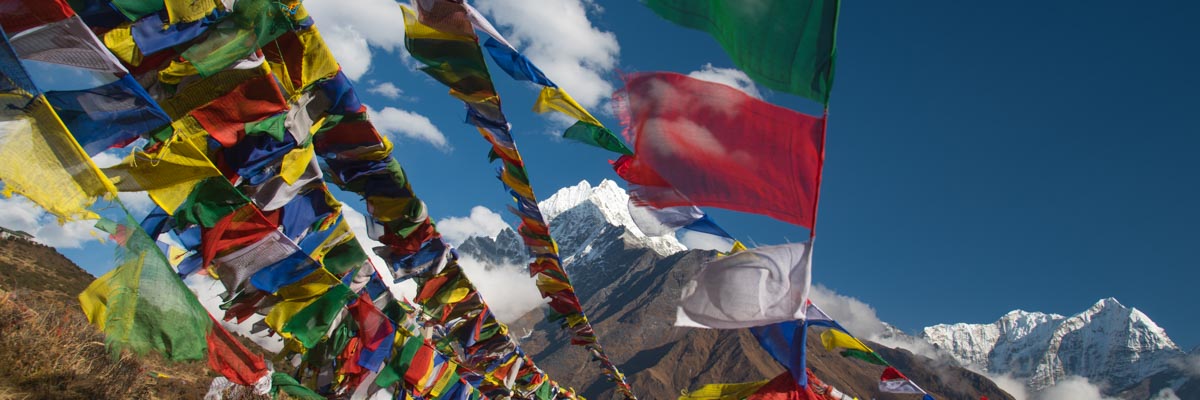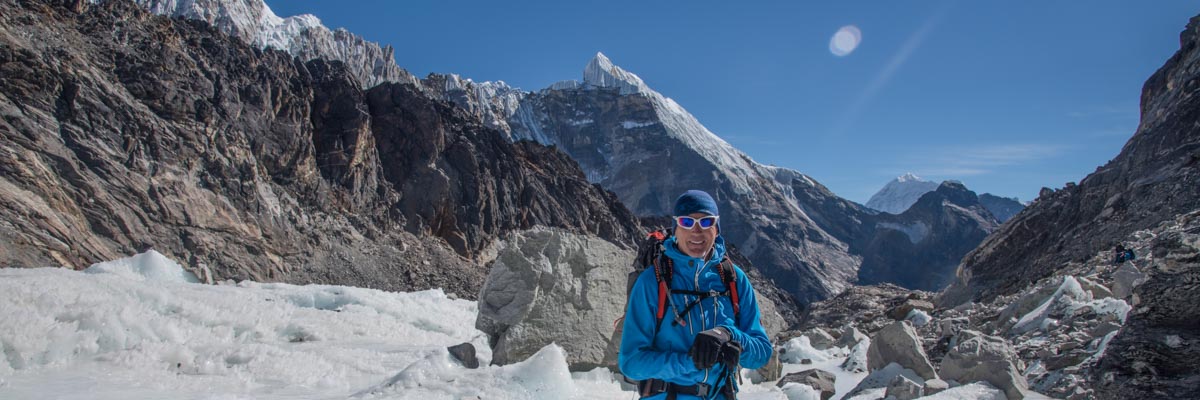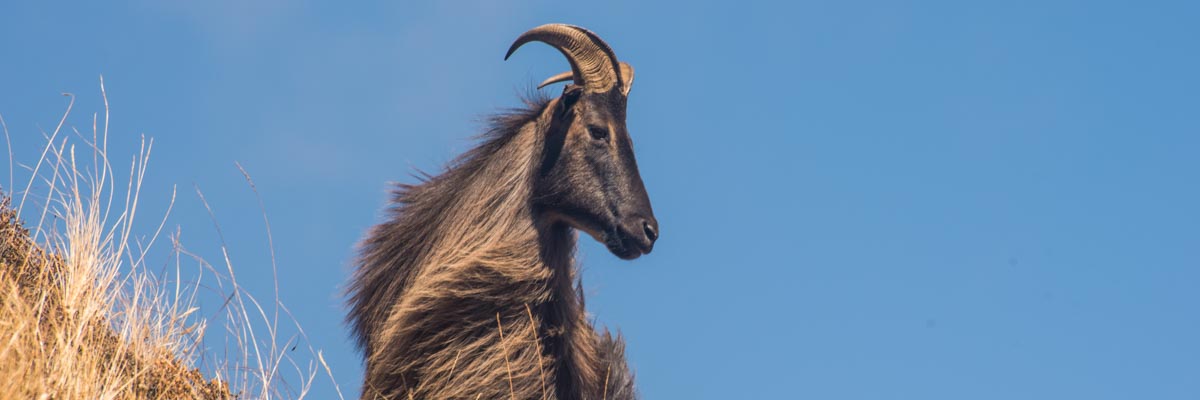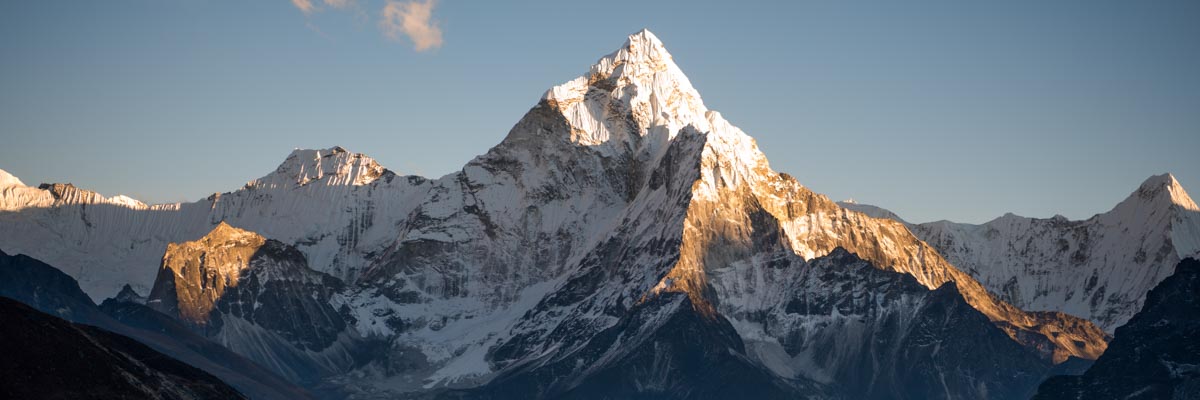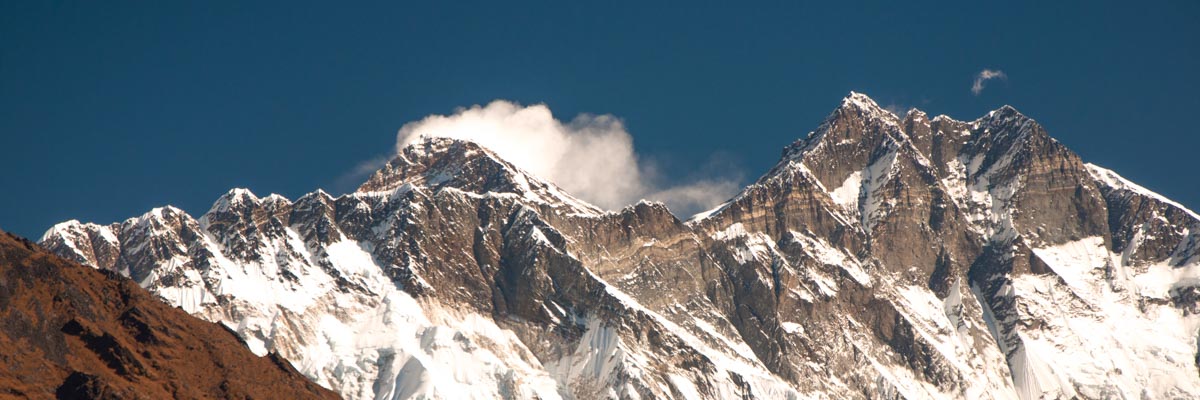Trekking Equipment List
Trekking Equipment List
Sleeping bag
Down-filled bags rated to -10º are best because high altitude nights will be cool. Good down is fluffy, light and thick. A muff (an extra section around the neck) makes a big difference to the overall warmth of a bag and a mummy bag is generally warmer than a rectangular bag. If your bag is rated for a higher temperature add a fleece sleeping bag liner to add warmth. A couple might like two bags that zip together.
Daypack
This should be comfortable, with a good waistband that transfers some of the weight to the hips. It needs to be big enough to take a jacket, fleece, drinking water, camera and odds and ends you might like during the day.
Duffel Bag
If you travel with porters, bring your gear in a duffel bag. Several companies make good duffel bags with a zipper along the side for ease of entry. This is not an item to economies on. Get a bag that is durable and has a strong zipper. A duffel bag 35cm in diameter and about 75cm long is large enough to carry your gear and will usually meet the weight limit of porters and domestic flights
Trekking Boots
For a happy trek you need comfortable feet. Good boots have: good ankle support, plenty of toe room for long descents, a stiff sole to lessen twisting torsion and are light, so you don’t tire after walking all day. Look at the inner lining – leather is good and Cambrelle is even better, a material that eats smelly foot bacteria. Good lightweight trekking boots or light all leather boots are ideal. Avoid arriving with brand new boots that you have not yet broken in! Walk in your new hiking boots on some steep hills that will test trouble spots before you leave home. The longer the trek, the better the boots you need.
Running shoes
Tennis or running shoes are good trekking footwear – even for long treks – if there is no snow. The trails are usually very rocky and rough. If the soles of your shoes are thin and soft, the rocks can bruise your feet and walking will be painful. There are numerous brands of light- weight trekking shoes that have stiffer lugholes and are available in both low-and high-top models. High-top shoes provide ankle protection, but low- cut shoes are made of a leather and nylon combination and many have Gore-Tex waterproof is fine for the trekking.
Socks
In the low country your feet will be warm or even hot while walking so quality cotton mix sports socks are best. Three to four pairs are enough. Thick trekking socks are better for higher up because you may walk in snow, and evenings are cool. We suggest you bring four pairs. Most modern trekking boots fit snugly so wearing two pairs of socks at the same time is impractical.
Camp shoes
A luxury for your feet at the end of the day: sandals or running shoes.
Fleece top
Most trekkers consider this essential, but alternatives are a thick thermal top or a light down jacket. In Kathmandu you can get cheap Korean fleeces but they are not the best quality.
Down Jacket or fiber-filled jacket
Down clothing has the advantage of being light and compressible. A down jacket will stuff into a small space when packed, yet puff up when you wear it. You should bring a good down jacket on all treks. Most ski jackets are not warm enough and most so-called expedition parkas are too heavy and bulky. The secret is to choose one that will be warm enough even at the likely coldest temperatures, but also comfortable when it is warmer. Don’t bring both a heavy and a light down Jacket; choose one that will serve both purposes, preferably one with a hood that is also stuffed with down. If you feel extremely cold at high altitude, you will likely wear your down jacket to bed inside your sleeping bag.
Wind or rain jacket
Waterproof and breathable. Plastic ponchos or non-breathable raincoats are not suitable.
Nightwear thermal top
Mid-weight is better. Useful but not essential.
Fleece/sweat pants
Great for the chilly evenings, thicker is better and polypro is better than cotton.
Day wear shirt
T-shirts are popular but a shirt with a collar and long sleeves are more practical. The collar protects the back of your neck from the sun and the sleeves can be rolled up or down. Take two so you can swap damp for dry. Look for shirts made of quick dry fabrics rather than cotton.
Trekking pants
You will live in these. Light material, loose fitting and dark-colored is best.
You can survive with only one pair but they will get dusty or muddy so a change is a good idea. Cotton cheapies in the local fashion can be bought in Kathmandu.
Wind pants
If your trekking pants are reasonably windproof then special wind pants are not needed. If you do bring a pair, it is not necessary to have gore-tex or waterproof pants.
Underwear
Bring 4 to 7 pairs as doing laundry is usually not practical.
Warm hat or balaclava
Nice for the evenings, even for wearing to bed on cold nights.
Sunhat
A sun hat is an important item, but its design is not critical. Obviously, a hat with a wide brim affords greater protection. Fix a strap that fits under your chin so the hat does not blow away in a wind gust.
Neck gaiter
For winter trekking they are really the best for staying warm! A fleece triangle with a Velcro fastening works well, and is easy to pull up when the yaks stir up trail dust.
Trekking poles
Definitely useful, especially on steep, rough terrain, but if you are not used to using them you will not miss them.
Sunglasses
Suitable for snow, as it is bright up there, but specialized glacier glasses with side pieces are not needed for the average trek. Contact lens wearers report very few problems except cleaning them in the conditions. Be sure to bring plenty of cleaning solution with you. Ski goggles are unnecessary.
Mittens/Gloves
These don’t need to be fancy (pockets are the warmest solution to cold hands), so local Kathmandu fleece gloves are fine.
Water bottle
Should be a one-litre size, accept boiling water, and be leak-proof. You will want a 2 or litre capacity in all. A metal bottle can double as a hot water bottle on cold nights.
Torch
Petzl Tikka’s and other similar torches with LED bulbs are best. You will need a lamp for reading after dark, and for finding you way to the outhouse. A headlamp is fine for climbing although many people prefer a second torch.
Toiletries and odds and ends
Bring essentials for the trek only. There are a surprising number of showers or buckets of hot water available. The smallest tube of toothpaste is perfect for a month. We provide toilet paper and you can purchase more in lodges. Roll-on deodorant can spare you grief with your tent partner. Hand cleaner in a bottle (“Purelle” or similar) is a good idea, and better for the environment than “handy wipes”.
Towel
Bring only a small one trekking, or consider using a sarong. Mountain shops sell towels made of a quick dry fabric. In Kathmandu the hotel supplies towels.
Sun screen and lip care with sun protection
The sun is strong at altitude, especially after snow, and you will want to use these most days.
Water purification
One bottle of iodine tablets between two. Douglas or Potable Aqua is the best. Shops in Canada sell Pristine, which is a good option. We tend to use boiled water from the lodges but occasionally take water from the streams. The use of mineral water is discouraged from an environmental point of view.
Snow gaiters
These are not needed, but bring them if you already have some in case we get or cross a pass about 5400M high.
Evening camp wear
Around camp you can wear camp shoes, sandals (for non-winter treks) or leather boots. No matter what altitude and what season the temperature can get to -10º after dark. By far the best clothing is:
+ A down jacket, medium weight
+ Thick fleece pants
+ Fleece hat and neck gaiter
+ Thick shoes with wool socks
Available in Kathmandu or bring from home
1) Sleeping sheet
2) Duffel Bag
3) Trekking pants
4) Wind pants
5) Fleece top
6) Warm hat
7) Light gloves
8) Toilet paper
9) One litter of water bottle
10) Pee bottle
11) Lip care
12) Torch
13) Snow Gaiters
14) Water purification
Bring from home
1) Sleeping bag
2) Day pack
3) Trekking Boots
4) Running shoes
5) Socks
6) Camp shoes
7) Rain jacket
8) Night wear top
9) Neck gaiter
10) Day wear shirt x2 or 3
11) Underwear
12) Sun hat
13) Sun screen
14) Sunglasses
15) Toiletries and odds and ends
16) Small towel/sarong
17) Personal medicines
18) Camera
19) Money pouch/belt
20) Passport photos 2x
21) USD40 cash for visa (30 days visa)
22) Energy bars (if you want)
23) Vitamin tablets (if you want)
